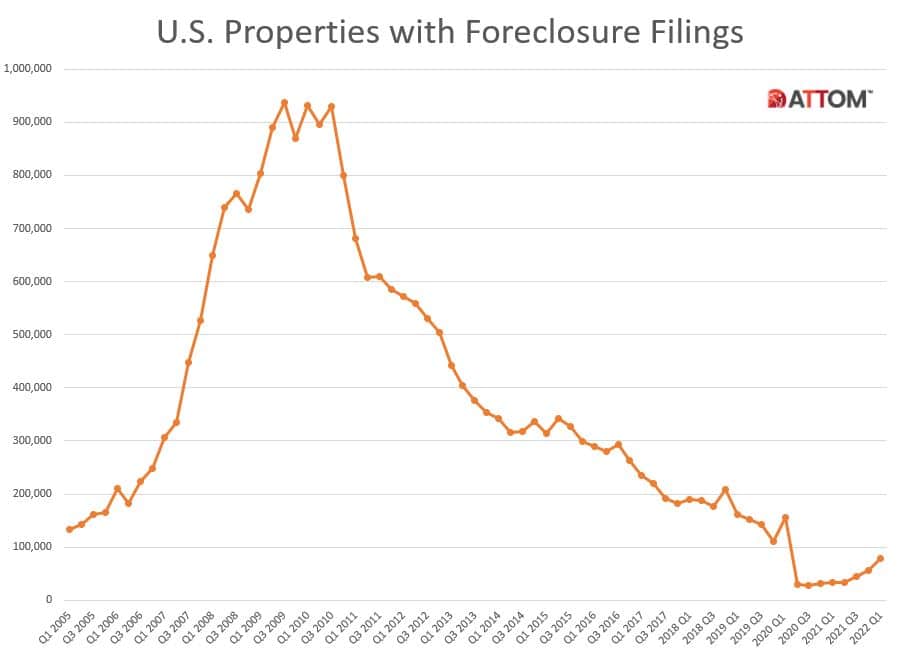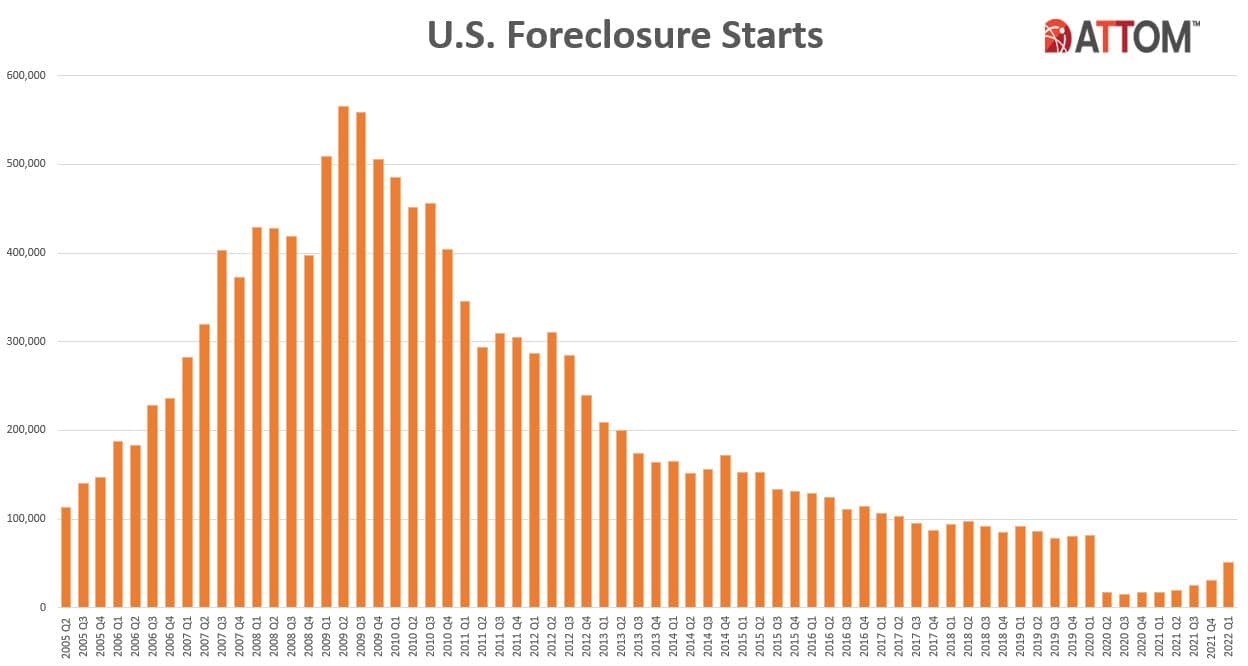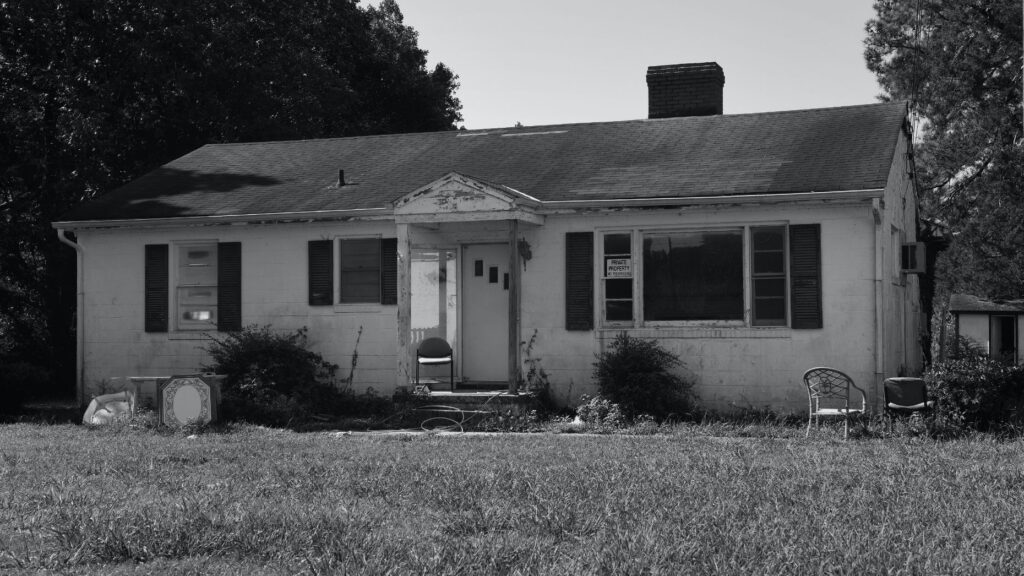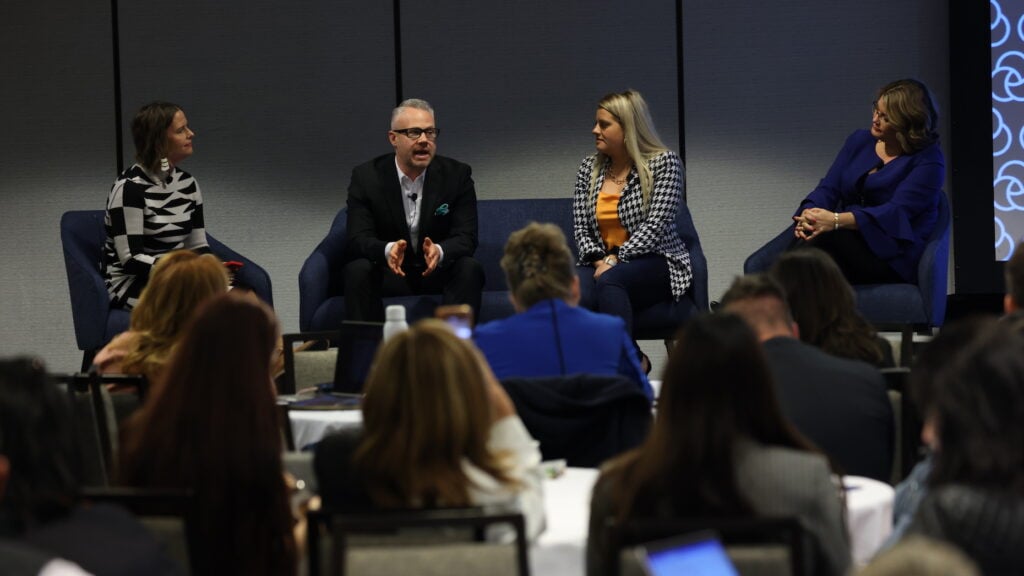U.S. foreclosure activity hit a new high not seen since the start of the COVID-19 pandemic, as foreclosures continue to rebound following the lapse of federal moratoriums, according to data from Attom.
U.S. foreclosure activity hit a new high not seen since the start of the COVID-19 pandemic during the first quarter of 2022, data released by foreclosure licensor Attom on Thursday showed, as foreclosures continue to rebound following the lapse of federal moratoriums.
The number of U.S. properties with a foreclosure filing during Q1 was up 39 percent from the previous quarter and up 132 percent year over year to a total of 78,271 properties. Although foreclosures increased significantly during this period, they remain well-below pre-pandemic levels, Attom’s report noted.
Rick Sharga
March 2022 marked the 11th month in a row in which U.S. foreclosure activity increased on an annual basis, with foreclosure filings up 29 percent from February and up 181 percent from March 2021 to a total of 33,333 properties with foreclosure filings.
“Foreclosure activity has continued to gradually return to normal levels since the expiration of the government’s moratorium, and the CFPB’s enhanced mortgage servicing guidelines,” Rick Sharga, executive vice president of market intelligence for Attom, said in a statement.
“But even with the large year over year increase in foreclosure starts and bank repossessions, foreclosure activity is still only running at about 57 percent of where it was in Q1 2020, the last quarter before the government enacted consumer protection programs due to the pandemic.”

Foreclosure starts
Foreclosure starts rose in all 50 states during the first quarter, with starts up 67 percent from the previous quarter and up 188 percent year over year to a total of 50,759 starts.
California (5,378 starts), Florida (4,707 starts), Texas (4,649 starts), Illinois (3,534 starts) and Ohio (3,136) were the states with the highest number of foreclosure starts during the quarter.
The major metro areas with the greatest number of foreclosure starts during the quarter also resided in many of those states, with the largest number of starts in Chicago (3,101 starts); New York (2,580 starts); Los Angeles (1,554 starts); Houston (1,431 starts); and Philadelphia (1,375 starts).

Highest foreclosure rates
States with the highest foreclosure rates included Illinois (one in every 791 housing units with a foreclosure filing), New Jersey (one in every 792 units), Ohio (one in every 991 units), South Carolina (one in every 1,081 units), and Nevada (one in every 1,090 units). At the national level, one in every 1,795 housing units had a foreclosure filing during the first quarter.
Out of the metro areas with a population of at least 200,000, Cleveland, Ohio (one in every 535 housing units); Atlantic City, New Jersey (one in 600); Jacksonville, North Carolina (one in 6330; Rockford, Illinois (one in 634); and Columbia, South Carolina (one in 672) saw the highest foreclosure rates.
REOs
Bank repossessions (REOs) also saw a substantial increase during Q1 2022 with REOs up 41 percent from the previous quarter and up 160 percent from the year before for a total of 11,824 U.S. repossessions.
The greatest number of REOs occurred in Michigan (1,592 REOs), Illinois (1,288 REOs), Florida (673 REOs), California (655 REOs), and Pennsylvania (639 REOs).
Average time to foreclose
As foreclosure figures rose during the quarter, the time it took properties to foreclose declined by 3 percent from the previous quarter. Properties foreclosed during the first quarter foreclosed in an average of 917 days, down from 941 days in the previous quarter and down by 1 percent from 930 days during Q1 2021.
States that foreclosed on properties the most quickly included Montana (133 days), Mississippi (146 days), West Virginia (197 days), Wyoming (226 days), and Minnesota (228 days).
Sharga added that foreclosure activity would likely not return to pre-pandemic levels until the end of 2022, at the earliest, pending no major economic catastrophe.
“March foreclosure activity was at its highest level in exactly two years — since March 2020, when there were almost 47,000 foreclosure filings across the country,” Sharga said in a statement. “It’s likely that we’ll continue to see significant month over month and year over year growth through the second quarter of 2022, but still won’t reach historically normal levels of foreclosures until the end of the year at the earliest, unless the U.S. economy takes a significant turn for the worse.”
Email Lillian Dickerson



 Are You Interested in West Eleventh Residences Miami?
Are You Interested in West Eleventh Residences Miami? Are You Interested in ONE Park Tower by Turnberry?
Are You Interested in ONE Park Tower by Turnberry? Are You Interested in Diesel Wynwood Condominium?
Are You Interested in Diesel Wynwood Condominium? Are You Interested in Five Park Miami Beach?
Are You Interested in Five Park Miami Beach? Are You Interested in Cipriani Residences Miami?
Are You Interested in Cipriani Residences Miami? Are You Interested in Bentley Residences Miami?
Are You Interested in Bentley Residences Miami? Are You Interested in Baccarat Residences Brickell?
Are You Interested in Baccarat Residences Brickell? Are You Interested in Aria Reserve Miami?
Are You Interested in Aria Reserve Miami? Are You Interested in 888 Brickell Dolce & Gabbana | Miami?
Are You Interested in 888 Brickell Dolce & Gabbana | Miami? Are You Interested in 600 Miami WorldCenter?
Are You Interested in 600 Miami WorldCenter? Are You Interested in HUB MIAMI RESIDENCES?
Are You Interested in HUB MIAMI RESIDENCES? Are You Interested in WALDORF ASTORIA RESIDENCES?
Are You Interested in WALDORF ASTORIA RESIDENCES?